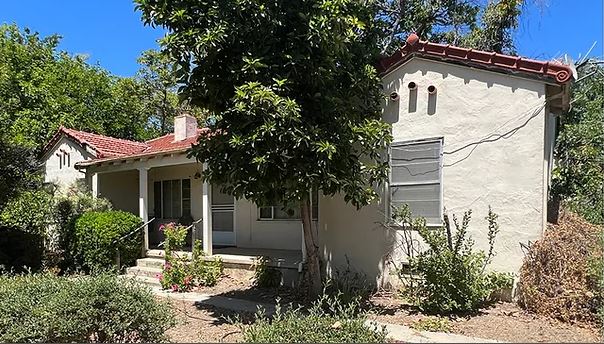(This is part of our ongoing series, Lost Kinjo- a look at the more than 40 Japanese communities that disappeared after World War II. It is supported by funding from the California Public Library Civil Liberties Project and the Takahashi Family Foundation.)
A historic North San Jose farmhouse stands as a powerful symbol of Japanese American farming.
This house carries the weight of history—echoing the painful chapters of World War II incarceration and the remarkable friendship between the home’s owner, Eiichi Sakauye, and his White neighbor, Edward Seely, who safeguarded the farm during his imprisonment.
On August 13, a City Council vote narrowly saved the farmhouse from being reduced to a mere plaque or statue. The vote approved a development project for over 1,000 multi-family residences on the 23-acre farmland, with provisions encouraging the preservation of the farmhouse, either within the development or through relocation.
However, Preservation Action Council of San Jose (PAC*SJ) Executive Director Ben Leech told AsAmNews that this vote alone does not ensure the house’s safety.
Leech described the farmstead as an “oasis” in the city, arguing that bulldozing it to create a generic park named after the Sakauye family would be a missed opportunity to preserve a truly special place in San Jose. Since the project was first proposed in 2022, PAC*SJ has been advocating for the farmstead’s protection—whether by preserving the house, the orchards, or both.
“As much as San Jose and Silicon Valley is rightly focused on the future and innovation, it’s important to remember that we’re not the first people to have done that, and it’s a little bit of a shame. We risk our history, and we risk a lot if we don’t know our history—the good, the bad and the complicated,” Leech said to AsAmNews.
District 4 Councilmember David Cohen, who represents the development site, expressed support for relocating the house to History Park San Jose.
The area is already the location of 30 other historic homes. He noted that History San Jose and PAC*SJ have agreed to lead the fundraising effort for the move and preservation, aiming to open the house to the public as a historical exhibit.
District 10 Councilmember Arjun Batra echoed this sentiment, stating that preserving diverse histories is essential in San Jose.
“Eiichi Sakauye’s legacy as a leader and survivor is a powerful reminder of the strength and spirit that shaped our city. This preservation ensures that future generations will be able to learn about this history by visiting the farmhouse,” Batra told AsAmNews.
History San Jose President and CEO Bill P. Schroh shared that if the farmhouse is moved to History Park, there will be a permanent exhibit on the Sakauye family, integrated into educational programs for schoolchildren. He said the farmhouse would be positioned next to migrant worker cabins purchased by Sakauye in 1952.

“If we let the past be erased, how will we teach our children where we came from? This is why the mission of History San Jose and museums around the country are so important. Preservation and education are the keys to a bright future. As the saying goes, ‘Those who don’t know history are doomed to repeat it,” Schroh shared with AsAmNews.
District 7 Councilmember Bien Doan, another strong supporter of this project, said the Sakauye farmhouse would serve as an attractive new destination for visitors. He explained that historic homes offer immersive learning experiences through their architectural styles and construction techniques.
Vanessa Hatakeyama, Acting Museum Director of the Japanese American Museum of San Jose (JAMsj), expressed gratitude for the public support that has emerged for preserving the property, noting that it extends beyond the Japanese American community.
She noted that JAMsj is in discussions with the city and History Park to explore potential involvement in the future development of the farmhouse.
“I’ve been very heartened and inspired by how much public support has come forward for the preservation of the property and see the importance of the history,” Hatakeyama shared with AsAmNews. “I’m hoping we can continue to collaborate and push together to advocate for the historic preservation of this property.”
AsAmNews is published by the non-profit, Asian American Media Inc.
We are supported through donations and such charitable organizations as the Robert Wood Johnson Foundation. Donations to Asian American Media Inc and AsAmNews are tax-deductible. It’s never too late to give.
Please also follow us on Instagram, TikTok, Facebook, YouTube and X.



I think it’s incredibly awesome that’s down as they finally getting their proverbial head out of their butts and saving some of these incredible structures that for decades they’ve just been bulldozing in partying away the landfill because they’ll never be built again these structures when construction was an art form and a sense of pride I’m just really happy that I’ll be able to visit the site and see what the house looks like I’m 62 years old so I don’t have a lot of time left on this planet Earth but I want to be able to enjoy the architecture of past